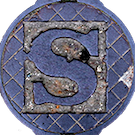982
edits
 Synthesis Infrastructures
Synthesis Infrastructures
No edit summary |
No edit summary |
||
| Line 3: | Line 3: | ||
|Affiliation=University of Washington | |Affiliation=University of Washington | ||
|Table Assignment=Table 3 | |Table Assignment=Table 3 | ||
}} | }} | ||
{{Workshop Submission | {{Workshop Submission | ||
|Interest=My new lab at the University of Washington combines biophysical modeling with experimental measurements to study how cells move their membranes. Our long-term goal is to identify some of the principles that govern the transition from nonliving proteins to living, adapting cells. Such an understanding requires a synthesis of disparate data in molecular and cellular biology that is distilled into conceptual and quantitative models. To further this goal, we also pilot experimental ways to structure and communicate our research. Using Roam Research, we are adapting Joel Chan’s discourse graph extension in order to turn our ongoing research projects into a collective knowledge graph. Our lab cybrarian, Michael Gartner, facilitates adoption by new lab members by developing group conventions and ease-of-use tools within Roam Research. Each lab member will structure their literature review using a discourse graph (Question/ Claim/ Evidence/ Hypothesis) and structure their research project using a novel structure we call a results graph (Question/ Conclusion/ Result/ Issue). We hypothesize that this structure will flatten the learning curve for conducting original empirical research and allow individuals’ intellectual contributions to interleave into a collective project, with more accurate credit attribution for research done. In this workshop, we would like to learn from knowledge synthesis researchers and tool developers to inform, guide, and help scale this pilot project for broader use. | |Interest=My new lab at the University of Washington combines biophysical modeling with experimental measurements to study how cells move their membranes. Our long-term goal is to identify some of the principles that govern the transition from nonliving proteins to living, adapting cells. Such an understanding requires a synthesis of disparate data in molecular and cellular biology that is distilled into conceptual and quantitative models. To further this goal, we also pilot experimental ways to structure and communicate our research. Using Roam Research, we are adapting Joel Chan’s discourse graph extension in order to turn our ongoing research projects into a collective knowledge graph. Our lab cybrarian, Michael Gartner, facilitates adoption by new lab members by developing group conventions and ease-of-use tools within Roam Research. Each lab member will structure their literature review using a discourse graph (Question/ Claim/ Evidence/ Hypothesis) and structure their research project using a novel structure we call a results graph (Question/ Conclusion/ Result/ Issue). We hypothesize that this structure will flatten the learning curve for conducting original empirical research and allow individuals’ intellectual contributions to interleave into a collective project, with more accurate credit attribution for research done. In this workshop, we would like to learn from knowledge synthesis researchers and tool developers to inform, guide, and help scale this pilot project for broader use. | ||